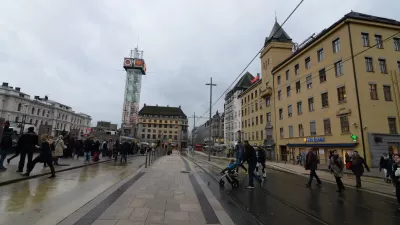Friday's foiled attempt by an alleged terrorist to massacre civilians on a Paris-bound, high-speed Thalys train has raised fears that a similar attack could be launched on one of America's lesser-speed trains. Are current security measures adequate?
"Unlike airports, which are guarded with multiple layers of security — including airport police and Transportation Security Administration [TSA] personnel operating metal detectors and full-body scanners — most railroad stations have minimal scrutiny for those boarding train," writes Ron Nixon for The New York Times.
True, larger stations, like Penn Station in Manhattan and Union Station in Washington "have armed Amtrak police officers, often with bomb-sniffing dogs" performing safety and security measures, including random searches of passengers and baggage, writes Nixon. Amtrak Police number 500 officers.
The August 21 first alleged terrorist attempt by Ayoub El-Khazzani, a Moroccan national who lived in Spain, was hardly the first example of train terrorism—though it may be first such attempt averted by the actions of passengers. Nixon points to:
- Mumbai, India killing of 190 on seven commuter trains 2008.
- London 2005: "Four coordinated bomb attacks tore apart subway trains and a bus in central London, killing 52 people and injuring hundreds more."
- Madrid train bombings that killed 191 people in 2004.
Nixon describes TSA's "Visible Intermodal Prevention and Response, or VIPR, squads, assigned to patrol transportation hubs such as train and bus stations." In a 2013 article, Nixon wrote that VIPR was started in 2005 after the Madrid bombings that killed 191 people.
Still, security experts say trains remain vulnerable to terrorist attacks. A 2011 report by the Department of Homeland Security found security gaps at many Amtrak stations. Congress and security experts have long debated whether to institute screening systems at railroad stations similar to those at airports, but plans have gone nowhere — largely because of cost and resistance from passengers.
Nixon notes that "frustrations with airport screenings" has led to increased patronage of Acela high-speed train between New York and Washington, amounting to 75 percent of corridor travel. Prior to September 11, 2001, when airport security became rigorous, the share was a third.
Amtrak allows firearms on trains, a result of a 2009 policy change posted here. However, they must be in checked baggage and packed accordingly.
FULL STORY: Train Attack in Europe Puts Focus on Vulnerability of U.S. Rail

Alabama: Trump Terminates Settlements for Black Communities Harmed By Raw Sewage
Trump deemed the landmark civil rights agreement “illegal DEI and environmental justice policy.”

Study: Maui’s Plan to Convert Vacation Rentals to Long-Term Housing Could Cause Nearly $1 Billion Economic Loss
The plan would reduce visitor accommodation by 25% resulting in 1,900 jobs lost.

Planetizen Federal Action Tracker
A weekly monitor of how Trump’s orders and actions are impacting planners and planning in America.

Wind Energy on the Rise Despite Federal Policy Reversal
The Trump administration is revoking federal support for renewable energy, but demand for new projects continues unabated.

Passengers Flock to Caltrain After Electrification
The new electric trains are running faster and more reliably, leading to strong ridership growth on the Bay Area rail system.

Texas Churches Rally Behind ‘Yes in God’s Back Yard’ Legislation
Religious leaders want the state to reduce zoning regulations to streamline leasing church-owned land to housing developers.
Urban Design for Planners 1: Software Tools
This six-course series explores essential urban design concepts using open source software and equips planners with the tools they need to participate fully in the urban design process.
Planning for Universal Design
Learn the tools for implementing Universal Design in planning regulations.
Caltrans
Smith Gee Studio
Institute for Housing and Urban Development Studies (IHS)
City of Grandview
Harvard GSD Executive Education
Toledo-Lucas County Plan Commissions
Salt Lake City
NYU Wagner Graduate School of Public Service



























